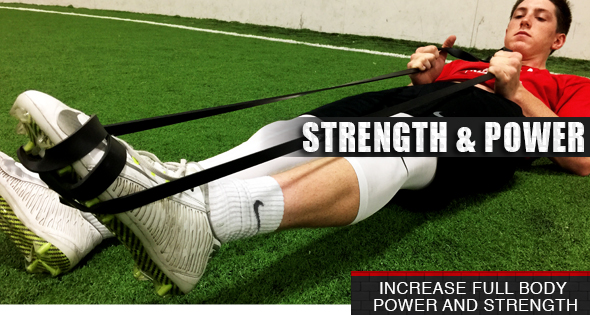How Often Should You Train Your Traps – Trap Exercise
You have been consistently working out at home or are just beginning on this journey to a more active lifestyle. After some research you decide your back needs some attention to help the shape of your torso and the way your shirt fit. What is the muscle group called the traps and how do I work this muscle? The trapezius, traps, are flat triangular muscles in the central back that extend out and down from the neck and down between the shoulder blades connecting in the mid back. The traps are used to tilt and turn the head and neck, shrug and steady your shoulders and used to twist your arms. They also are key to the movement of the scapula or shoulder blades. The following video will provide you a sample trap home workout routine as well as times per week, weight to be used to stimulate maximum growth, and guidance on working the muscle to failure.
What At Home Workout Frequency is Best to Maximize Trap Growth
We will rely on conventional wisdom to answer the workout frequency question. Of course there are many variations and nuisances that should be considered when developing your optimum frequency. Your experience with weight training and your consistency with lifting could be a factor. Plus any modifications that need to be considered based on your body composition, available equipment, and level of knowledge. Weightlifting and training manuals suggest that you don’t work any muscle group on back-to-back training days. If you follow this approach this means you work your traps 3 or 4 times per week. Taking a rest/recovery day in between workouts. This is the workout frequency that Trevor and Carl in the video typically follow though we have been experimenting with variations on this methodology. I will discuss these modifications in the next section.
Working your traps 3 or 4 times per week should allow you to get maximum pump in the muscle and still allow time for recovery. When performing your at home workout routines you should do between 4 to 6 sets of each trap exercise. Always start your sets with a lighter weight to help warm-up the muscle and get blood to the area. This prepares the muscle for the heavier load that will be coming later in each trap exercise as you increase the weight. The warm-up also helps to protect the body from becoming overstressed. Finally, one of the best benefits is it allows you to practice the exercise and isolate the targeted muscles you will be working. During the warm-up you practice only contracting the traps while the surrounding muscles stay relaxed and are not engaged in the workout. This ensures you are getting maximum workout of your traps. More on this later.
Heavy Weights or Heavy Frequency in My Trap Workouts
As I mentioned earlier, we usually follow the 3 to 4 times per week workout routine completing 4-6 sets during each workout of 12-15 reps. Sometimes we like to add variety and muscle confusion to our workouts to help stimulate the muscle growth. We do this by using very heavy weights and performing a much lower rep range. Using a much heavier weight will really work the muscle, as it has to work much harder to adapt and adjust to the heavier load. We will use this approach when performing T-Bar Rows. Using a heavier weight load you should only complete 4-6 reps in your workout set as opposed to the 12-15 you had been performing. Even when we perform our 3 to 4 times per week routine notice that we continually add weight in each set. We added weights to the Standing Low Row to increase the muscle burn and force the traps to change. This is another slight variation that will cause your muscles to have to adapt to a new stimuli. These various modifications will increase your muscle activation and growth. This occurs because you are continually challenging your muscle by forcing it to adapt to heavier weights or higher frequency.
Another variation that can be incorporated in your lifting routine to stimulate muscle development is using a much lower weight but increasing the number of reps in each set. When using this training approach it is especially important to work the traps to failure. Working to failure doesn’t mean to lift to exhaustion. In weight training this means continuing a set until you can’t do any more repetitions with that weight without stopping to rest while still maintaining proper form. We used this approach in the video when performing our Pull-Up sets and Power Turns. When working out using this approach of less weight but higher reps, we have found that the rest periods can be reduced. This allows us to work the muscle quicker than the traditional lifting of every other day.
How Do I Isolate the Traps and Not Use My Shoulders to Help the Movement
When working any muscle it is important that you work to isolate and only work the muscle that is targeted in that particular workout. When working the traps it is really difficult not to recruit your surrounding back and shoulder muscles during the movement. There are a couple things you can do to help with this.
First, to help isolate the traps always make sure you focus on your form during the warm-up. This will help you concentrate on only contracting the traps, or the muscle you are working, while keeping the surrounding muscles relaxed and out of the exercise. As you add heavier weight to the Barbell Shrugs you will have practiced the isolation of the traps and keeping the surrounding muscles relaxed.
Second, if you are not able to do the Barbell Shrugs with full range of motion without recruiting the other muscles then use a lighter weight so you keep the focus and isolation on your traps. This will ensure maximum stimulation and pump of the traps, achieving your desired results. If you need to reduce the weight don’t worry about minimizing your gains. Remember that you should also be completing each set to failure. This will help compensate for the lighter weight until you can lift the heavier weight with proper form. Lifting the lighter weight to failure will still cause a big burn in your traps and force them to adapt and grow.


